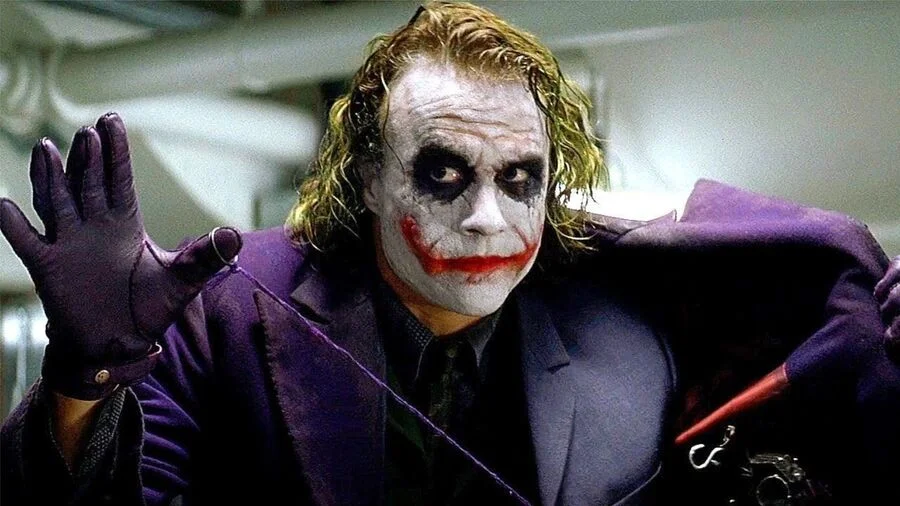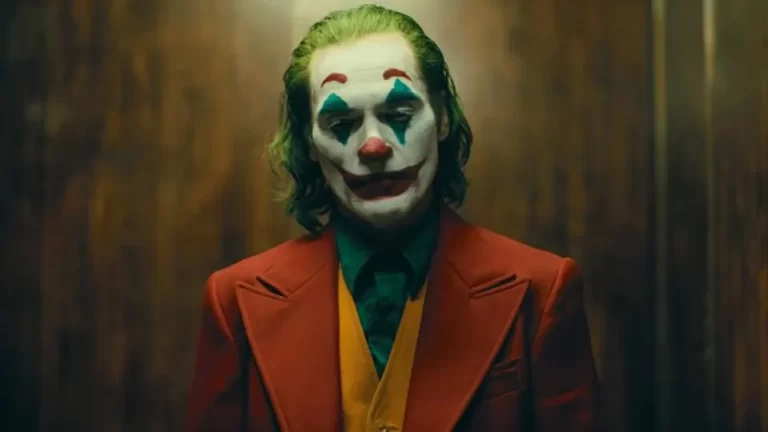In Christopher Nolan’s The Dark Knight (2008), the transformation of Harvey Dent into the villain Two-Face stands as one of the film’s most devastating character arcs. As Gotham’s “White Knight,” Dent represents law, order, and moral clarity—qualities that sharply contrast with the Joker’s chaos-driven worldview.
Yet by the film’s end, Harvey succumbs to vengeance, corrupted by the very villain he once fought against. The Joker’s manipulation of Harvey Dent is not only central to the film’s narrative but also a powerful exploration of how even the most principled individuals can be broken under the right psychological pressure.
Dent’s Psychological Vulnerability
To understand how the Joker manipulates Harvey Dent, it’s essential to first grasp Dent’s psychological makeup. Dent is not merely a symbol of justice; he is a man deeply invested in the idea of fairness. His trademark coin flip, though initially portrayed as a lighthearted gimmick, hints at his complex relationship with control, fate, and justice.
Dent is a passionate, ambitious prosecutor, but his moral center is more fragile than it first appears. He is someone who has built his worldview on order and predictability. This dependency makes him particularly susceptible to collapse when that order is shattered.
The Joker identifies this fragility early on—not as weakness, but as potential. He understands that Dent’s obsession with justice can be twisted into a justification for revenge.
Step One: Undermining Trust in Institutions
The Joker’s first move isn’t to confront Dent directly, but to destabilize his environment. Through acts of terror, he systematically exposes the fragility of Gotham’s institutions—its police force, its judicial system, and even its heroes.
When the Joker targets officials and civilians alike, Dent’s faith in Gotham’s system begins to erode. Even more damaging is the Joker’s use of infiltrated police officers—corrupt individuals responsible for Rachel Dawes’ death and Dent’s own disfigurement. Dent, who once relied on these systems for justice, begins to view them as compromised and incapable of serving their purpose.
By showing Dent that corruption is endemic and that the people meant to protect justice are complicit in its failure, the Joker removes the foundation upon which Dent has built his moral identity.
Step Two: Engineering Personal Catastrophe
The Joker doesn’t just aim to destabilize Dent ideologically—he devastates him personally. By abducting both Rachel and Dent and placing them in separate, rigged warehouses, the Joker forces Batman into a cruel moral dilemma: save one, lose the other.
The Joker lies about their locations, ensuring that Batman saves Harvey instead of Rachel. This act seals two fates: Dent is disfigured by an explosion, and Rachel dies screaming his name. It’s an emotionally annihilating moment for Dent—he wakes up alone, scarred, and shattered.
Importantly, the Joker orchestrates this event not just for suffering’s sake, but to construct a narrative. In the aftermath, Dent is left with a question: Who is responsible for this loss? The Joker sows the answer.
Step Three: Framing Gordon as the Villain
Once Dent is vulnerable, the Joker visits him in the hospital. His approach is eerily calm, almost philosophical. He doesn’t force Dent into anything. Instead, he positions himself as a truth-teller in a world full of liars.
The Joker tells Dent that he’s not the one to blame. He claims he has no plan and acts merely as an agent of chaos. Then he shifts Dent’s rage toward others—specifically, those who play by rules: the cops who betrayed Rachel, Gordon who “failed to protect” her, and Batman, who made the final choice.
The Joker’s manipulation is surgical. By presenting himself as honest in his madness, he gains credibility. In contrast, Gordon and Batman, who operate within moral gray zones, now seem disingenuous. Dent begins to see himself as the only one capable of real justice—unbound by the system that betrayed him.
The Joker gives Dent permission to abandon morality in favor of personal vengeance. He doesn’t convince Dent to kill out of hatred, but out of a perverse sense of fairness.
Step Four: Weaponizing Dent’s Trauma
By the time Dent emerges from the hospital as Two-Face, he has internalized the Joker’s philosophy. He adopts chance—the coin toss—as the ultimate arbiter of justice. The very object that once reassured Rachel and symbolized light-hearted risk now becomes a tool of judgment.
Dent’s transformation is not irrational. It’s methodical, detached, and—crucially—justifiable in his own mind. That’s the Joker’s ultimate victory: not just creating a killer, but creating a killer who believes he’s still fighting for justice.
The Joker doesn’t need Dent to become a maniac. He only needs him to believe that Gotham’s moral structure is a lie. Once Dent loses faith, the rest is inevitable.
Step Five: Using Dent Against Gotham’s Hope
The Joker’s endgame is not just Dent’s transformation—it’s what that transformation represents. Dent was the symbol of Gotham’s hope. His downfall is a public, symbolic blow that undermines every gain the city made in its war on crime.
The Joker ensures that Dent’s crimes are known, then sets the stage for his death. When Batman and Gordon find Dent holding Gordon’s son hostage, the arc reaches its apex. Dent, flipping his coin for justice, is no longer distinguishable from the criminals he once prosecuted.
Batman kills Dent to save the child, but instead of allowing Dent’s fall to taint Gotham, he and Gordon conspire to preserve his image. Batman takes the blame, reinforcing the idea that Dent died a hero.
This, too, is part of the Joker’s manipulation. He doesn’t just break people—he exposes how fragile morality becomes when truth is inconvenient. Even Gotham’s greatest defenders now participate in a lie to protect the public. The Joker, imprisoned but victorious, has forced them to compromise everything they once stood for.
A Masterclass in Psychological Warfare
The Joker’s manipulation of Harvey Dent is not rooted in force or magic—it’s rooted in insight. He identifies Dent’s pain points, accelerates his fall, and reorients his sense of justice. At every step, the Joker doesn’t coerce—he reframes. He transforms tragedy into weaponry.
Harvey Dent’s descent into Two-Face is a haunting reminder that evil often doesn’t corrupt through brute strength, but through the slow erosion of ideals. The Joker’s success lies in exposing that even heroes, when pushed far enough, can become agents of chaos themselves.
In the end, Harvey Dent wasn’t destroyed by fire or scars. He was destroyed by the story the Joker convinced him to believe.


